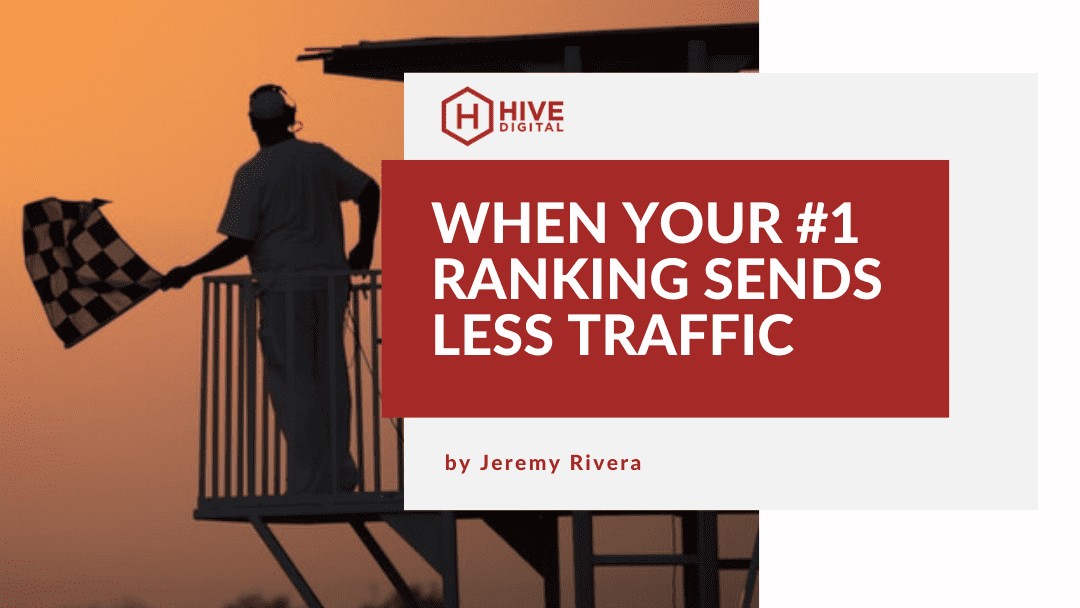In the earliest days of SEO, the “job” of the agency or consultant was a lot more straight forward. “Get us ranked number 1”. The reality is that with the evolution of search and how Google now displays it’s results for different queries, that vaunted “number one” ranking may not pack the punch that it would have years ago, despite the increase in the number of people using Google on a regular basis.
What Is Organic Click Through Rate
When your website is displayed for a particular search query as an “impression”, the amount of traffic that clicks on YOUR link (as opposed to the other urls/features/links on that same results page) is called your organic click through rate. It’s an important part of forecasting your potential SEO campaign traffic.
The amount of organic CTR associated with that number 1 ranking is measured by several ongoing surveys by SEOClarity and Advanced Web ranking. It shouldn’t be surprising that the amount of traffic that flows to sites when they sit in different positions changes, but you also have to realize that other factors outside of JUST which rank you have can change the amount of traffic you receive!
New features in the SERP could significantly change the CTR
— Chris Rydburg (@Rydch41) March 7, 2022
How SERP Features & Search Intent Can Impact “Organic CTR”
Multiple options here:
– *actual* search volume is different from tool estimates
– SERP features that distract from the #1 result/answer user questions within the SERP itself
– Page title / description that ranks well but doesn’t grab user attention— Kim Doughty (@howdydoughty) March 7, 2022
There’s a lot of potential factors there. industry, competitor set, searcher intent, what google thinks the intent is, the potential mix of intent in those results based on the search, rich snippets/local results around the top spot, paid results around the top spot…
Trend based search volume. Temporary surge of traffic but not sustainable.
— Chris Altamirano (@chrisalta) March 7, 2022
For local clients, #1 ranking isn’t as advantageous as a spot in the map-pack, because some customers may be looking for the “closest option” to solve their issue. Additionally, depending on how the SERP is laid out, there could be 3 sets of features between the Google Search bar and the organic search results, such as the Local Service Ads (Google Guaranteed), Map Pack, and Google Ads – as well as image / video carousels that can split up the organic SERPs.
How Do You Optimize Your Organic CTR?
Now that you know that just ranking for a keyword isn’t the “end” of the game, you can take additional steps to improve your site’s performance without changing your rank position directly!
Successfully nesting multiple pages in the SERPs can have a compounding effect as you better meet multiple intents. This is especially useful with Ecommerce sites that rank both product and product category pages alongside each other. Schema markup provides trust signals to the product page, and the quick link to your product category page lets visitors “window shop” if they are more interested in differentiating your product type.
In terms of improving CTR? Google Ads A/B testing to determine the best sales copy and apply that in conjunction with a SEO mindset.In terms of lost traffic? See if Google Ads are cannibalizing on the traffic and the value the fuller picture gives vs decreasing paid investment.It needs to synergize not steal.
Obviously quite a broad question as there’s numerous of things which can affect CTR. I lost traffic from adding FAQPage to some articles since the sitelinks on the search result disappeared as a result of implementing it.
Axel Hansson, Head of SEO at Viseo
- Aim to get multiple pages, with a different intent to rank for the same query
- Review competitor results for your search query and see if they have deployed additional Schema markup or have tabular data that’s awarding them a special SERP result.
- Try changing your title and description fields after reviewing your competitors, try to provide unique reasons in your copy to capture that click.
Don’t Forget That Paid Ads Can & DO Impact Organic CTR
At the end of the day, you can’t just capture that #1 ranking, and “be done with it”. You absolutely should celebrate when you get that top position, but you absolutely can push that outcome further, and get even better outcomes by testing, reviewing SERPs, making changes and testing again!

